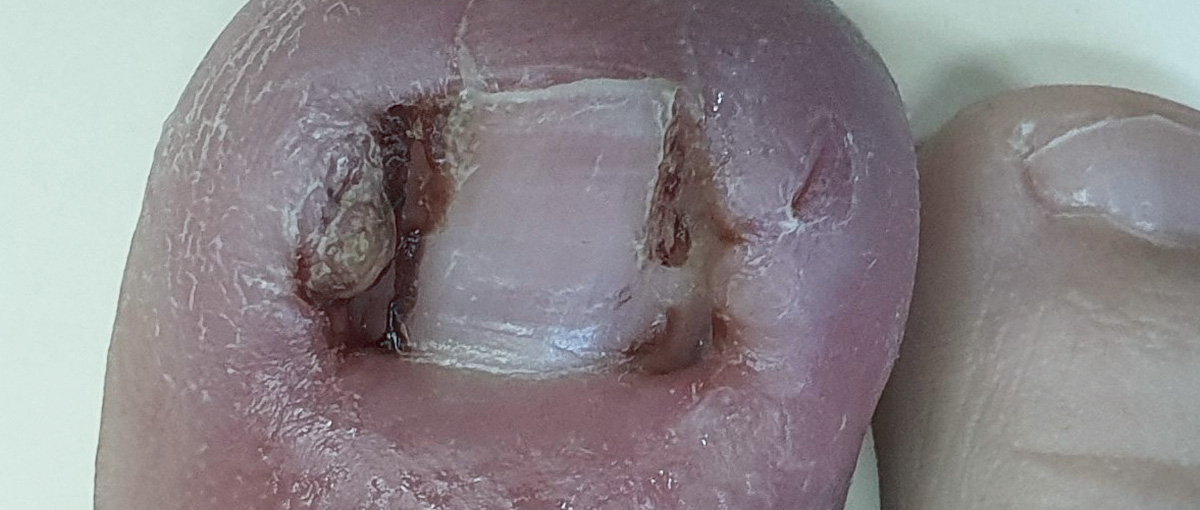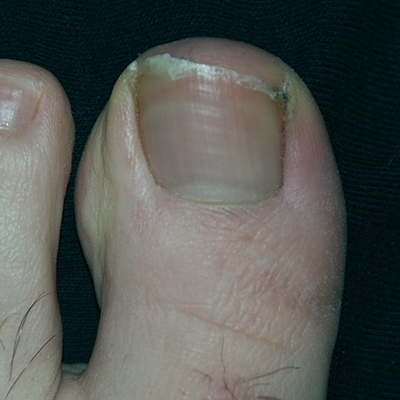What is an ingrowing toenail?
When the edge of the toenail digs into the skin fold beside the nail, the skin becomes red, hot, tender and swollen. This is an ingrowing toenail. Sometimes bacteria from the skin get into the inflamed skin and an infection begins. This results in much more inflammation, which may spread throughout the toe, or into the foot. Pus may also discharge from the edge of the nail.
The nail edge may dig in because it is excessively curved, because it becomes ragged and sharp or because of an injury. Often it seems to happen for no particular reason. It has been suggested that people with ingrowing toenails have abnormally shaped nail beds, but this has not been proven.
Can an ingrowing toenail be prevented?
Not absolutely! If you look after your toenails well and prevent them from getting ragged or developing painful spikes, you can reduce the chance of getting an ingrowing toenail.
Is there a right way to cut my nails?
If you cut your nails straight across, and not curved like the end of the toe, they will not grow into the skin fold of the nail, and hence there is a reduced chance of developing an ingrowing toenail. The end of the nail should be allowed to grow clear of the skin, such that any ragged ends do not dig into the skin.

However, even this will not guarantee that you cannot get an ingrowing toenail. It may still happen in well-kept nails, especially if you have had one before or are diabetic.
Can I treat an ingrowing toenail myself?
If the nail is only mildly inflamed, trimming it straight across and easing the nail out of the irritated area in the nail fold can help. Salt baths can help reduce the inflammation. Salt water, or saline solution, can be made by boiling a pint of water and then adding a teaspoon of salt. The solution lasts 24 hours, and should obviously be allowed to cool before use.
When should I take professional advice?
If redness and tenderness go beyond the toe, it may be infected and you should see your doctor as soon as possible.
If you have an ingrowing toenail that is not getting better with simple treatment and is interfering with your life it is worth contacting your GP or a chiropodist.
How will my doctor or chiropodist know what’s wrong?
The doctor or chiropodist will listen to your complaints about your nail. Then he or she will examine you, to see how bad your nail is and to see if there is a reason that it has failed to heal. Tests for medical conditions, which may interfere with healing of your toenail, such as diabetes, may be advised.
What can be done about it?
First the chiropodist will want to check that you have tried all the simple measures outlined above. If so, and if the nail is not getting better, it is usually best to partially or completely remove the nail to allow the nail to heal. This is usually done under local anaesthetic injected at the base of your toe.
Following surgery it is necessary to clean the nail bed with salt water, and dress it regularly, daily to start with. Many ingrowing toenails will heal after this treatment, but many others will not. If the ingrowing toenail recurs it is often best to remove the corner of the nail bed to stop the edge of the nail growing again. This may be done either by burning the nail bed out with a chemical (phenol) or by cutting it out surgically.
This operation is successful in 95% of people. Again, it is usually done under local anaesthetic. The complications of this procedure include infection, slow healing of the skin (approximately 6 weeks), and occasional regrowth of the nail, despite the chemical treatment.
What will the toe look like after it has been removed?
If only the edge of the nail has been removed, the nail will look similar to before treatment, although it will be a little narrower.
If the whole nail has been removed the “bed” where the nail has been removed will just be a flat area of skin. It is harmless, and quite acceptable, to paint the nail bed with nail varnish, and this camouflages the fact that the nail is absent very effectively.


